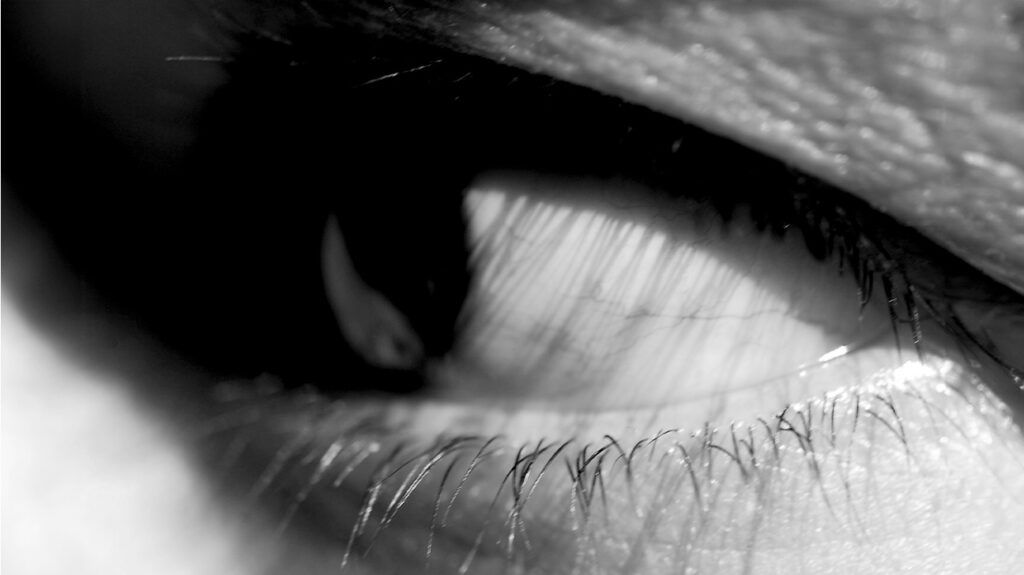Ocular albinism is a genetic condition that involves the eyes. This condition reduces the pigmentation of the iris — the colored part of the eye — and the retina, causing vision problems.
Albinism is an inherited condition that can cause pigmentation issues in several areas of the body. Ocular albinism (OA) is a type of albinism. Another type of albinism is oculocutaneous albinism, which causes pigment issues in the eyes, skin, and hair.
People with ocular albinism have a deficiency of melanin, which produces pigment in the eye, hair, skin, and iris. One difference between oculocutaneous and ocular albinism is that someone typically does not experience pigmentation issues in other parts of the body, such as the skin and hair. The pigmentation issue is exclusive to the eye.
This article will review ocular albinism, its causes, how doctors diagnose this disorder, and the treatment and management options available for people with this condition.

Ocular albinism is an inherited genetic condition that mainly affects the eyes. People with ocular albinism have a reduced pigmentation of the retina and the iris. Pigmentation of the eye plays a critical role in typical vision. Unlike other types of albinism, ocular albinism does not particularly affect hair and skin color.
Ocular albinism
The most common type is the Nettleship-Falls type, also known as ocular albinism type 1 (OA1). Some people with rare forms of ocular albinism may also develop complications, such as hearing loss.
Learn more about albinism.
Ocular albinism can cause a broad range of vision problems.
It can lead to reduced visual acuity — which is the eyes’ ability to distinguish shapes and object details — and color vision impairment. The visual acuity of people with ocular albinism typically
An acuity of 20/400 means that the individual needs to be at least 20 feet away to see what someone with regular vision can see at 400 feet.
Pain or discomfort when someone looks at something bright is also a symptom of ocular albinism. This can often cause the affected individual to close their eyes or repeatedly blink.
Other symptoms
- misaligned eyes, known as strabismus
- moving the eyes rapidly and without control, known as nystagmus
- nearsightedness, or myopia
- astigmatism
- farsightedness, known as hyperopia
- vision from one eye only
- problems with optic nerves
- iris problems, such as not having enough pigmentation to screen out light from coming into the eye
- incomplete development of the macula, which is the center of the retina, known as foveal hypoplasia
If a person develops any of these vision issues or experiences pain or discomfort following exposure to bright light, they need to consult a doctor to determine the underlying cause of their symptoms.
Most cases of ocular albinism are OA1. This type occurs due to a mutation in the GPR143 gene. This gene
GPR143 controls the growth of melanosomes, which have an important role in producing and storing melanin. Melanin gives skin, eyes, and hair their color and plays an important role in providing regular vision.
When a mutation in the gene occurs, it typically alters the size or shape of the GPR143 protein. These changes can prevent the protein from sending information to melanosomes, affecting their growth and function.
In other cases, the mutated protein may be able to reach the melanosomes but provide them with atypical information, disrupting their function.
The atypical function of the GPR143 gene can result in the melanosomes in the retina growing larger than usual. It may cause vision loss and other conditions affecting vision in those with ocular albinism.
In some rare cases, people may develop ocular albinism even if they do not have GPR143 gene mutations. However, doctors often cannot find a genetic cause when this occurs.
Diagnosis often starts with doctors reviewing the medical history of the person reporting ocular albinism-related symptoms and performing eye tests. Eye tests can help detect any atypical retina pigmentation or other signs relating to ocular albinism.
If the doctor suspects ocular albinism, they
Genetic tests can detect mutations in about 90% of males with ocular albinism.
Currently,
- wearing contact lenses or glasses to improve vision and treat strabismus
- low vision aids, such as handheld magnifiers for children
- wearing dark lenses or a wide-brimmed hat outside to avoid direct sunlight
- attending regular checkups or eye exams
- undergoing surgery in severe cases of strabismus or nystagmus
Ocular albinism is a genetic condition that can cause vision problems.
It often has links to mutations in the GPR143 gene, which controls the production of melanin in the body and leads to low levels of it. This melanin deficiency can lead to increased light sensitivity and prevent the typical development of the eyes.
There is no cure for ocular albinism, but a person can take several steps to improve their vision and protect their eyes from the sunlight. These measures include wearing glasses or contact lenses. Dark lenses or wearing a hat with a brim can also help avoid direct contact with the sunlight.
